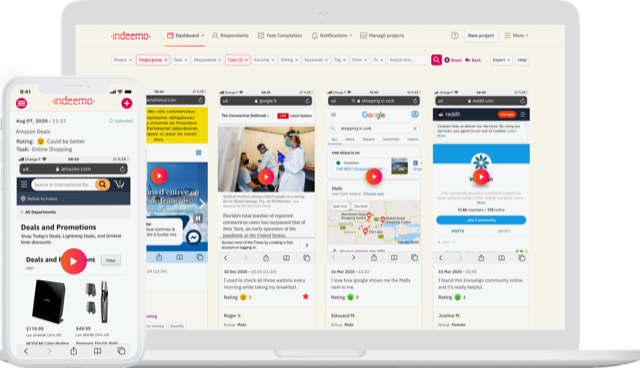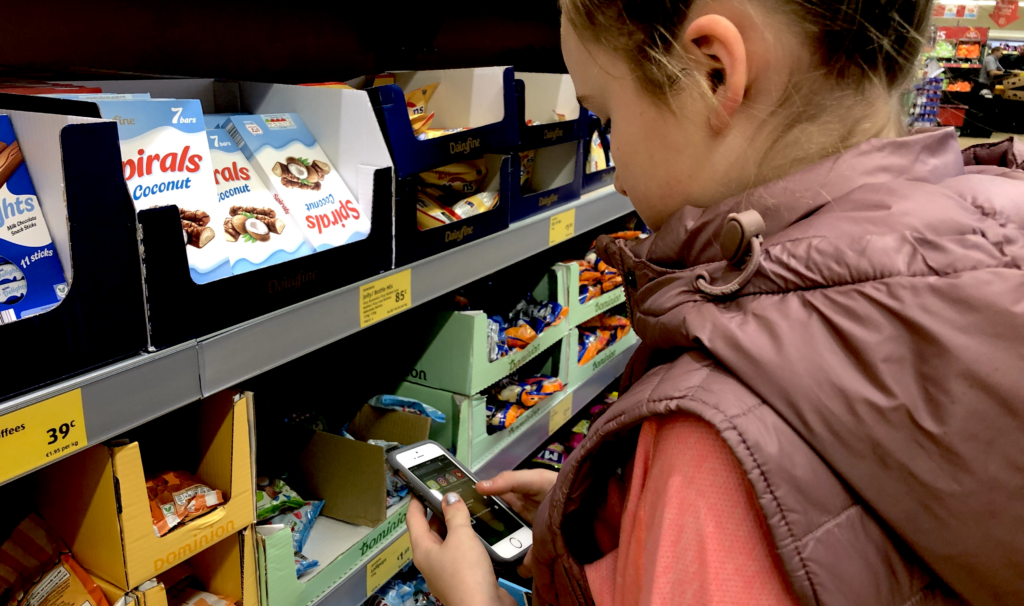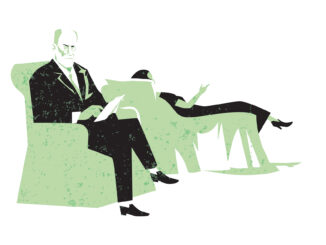One of the most significant changes brought on by the COVID-19 pandemic has been the sharply accelerated demand for online and mobile solutions. The pace of growth for retail e-commerce sales skyrocketed in 2020. In the U.S., these sales grew as much in just Q2 2020 as they did in the previous four years combined.1
That’s an acceleration of sixteen times! Later in 2020, according to CNBC, Black Friday online sales grew 29 percent to approximately $9.5 billion!2
Studies have shown that this boom in online interaction is unlikely to recede after the pandemic. A December 2020 McKinsey study showed that consumers are likely to keep the behaviors they’ve adopted amid stay-at-home orders, such as more online shopping and fewer mall visits.3 In a May 2020 survey by Updox of 2,000 U.S. adults, 65 percent said they liked using telehealth because of its convenience and, because of that, 51 percent said that they’d continue using it after COVID-19.4
The key implication is that marketers need to design and deliver omni-channel customer experiences. Consumers want to have seamless brand interactions, regardless of whether they’re in a store, online from a desktop or tablet, on a smartphone, or some combination of these at the same time.
For market researchers, exploring the complex omni-channel consumer experience will be more challenging than ever before. Traditional tools like physical shop-alongs or UX research are unlikely to provide a complete picture of how consumers make brand decisions.
Therefore, mobile ethnography, with its ability to capture video of both online and offline behavior, anywhere and anytime, will emerge as the go-to methodology for omni-channel research in 2021.
Fortunately, over the last five years, my colleagues and I at Indeemo have gained valuable experience providing and refining our technology platform for mobile ethnography. We’ve also gained the experience of collaborating with a wide variety of clients to successfully conduct thousands of these studies. In this article are best practices for getting the most out of your mobile ethnography projects.
How Does Mobile Ethnography Work?
Mobile ethnography is simpler than you may think. Respondents are given tasks to complete that are relevant to the research topic.
While doing these tasks, respondents use videos, photos, and/or text to show researchers how they behave in-the-moment. Leading platforms also offer mobile screen recording, which is extremely valuable for UX, CX, and Path-to-Purchase research.
The respondent user experience is just like posting photos or videos on a Facebook-style app, except what they post relates to a research topic and is only visible to the researcher.
Recruitment and Screening
You recruit and screen the same way you do for a focus group or IDI. The only additional screener questions are to ensure respondents have a suitable smartphone and operating system.Screening should include some element of basic tech-savviness. Ask if the respondents use apps like Facebook or WhatsApp. This will ensure you have respondents who are comfortable recording videos and sharing feedback in video. This is particularly important in multinational studies, as in some markets like Germany, respondents can be extremely conscious of privacy.Finally, choose a platform that is ISO 27001 or HIPAA compliant. Ask respondents to explicitly opt in and ensure they know who they can contact if they wish to back out.
Incentives
The same hourly rate you pay for a focus group or IDI should be used for your mobile ethnography project. Typically, for one-week studies, respondents will do fifteen to thirty minutes of tasks/activities per day. Take your hourly rate for focus groups and calculate the pro-rata equivalent.
If respondents need to travel, then the incentive will need to be more. If your respondents are harder to recruit or have a lower incidence rate (i.e., health care or B2B), incentives will be several times higher.

Collaboration with the Platform Provider Is Key
Before getting into the specifics of designing a mobile ethnography project, our first piece of advice is to consult with your mobile ethnography platform provider as early as possible. You should heavily weigh the level of human support that a platform provider offers when making a platform selection.
Choosing a provider that guides and supports you all the way through the process will ensure that you get early direction from their strategists on how best to design your research. This can be a huge differentiator when it comes to winning pitches. It will also save you a lot of pain downstream by helping you steer the design in a direction that ensures your client gets the results they need.
Be Respondent-Centric, not Client-Centric
When designing tasks, always put yourself in the shoes of the respondents. Chances are that apart from a quick discussion with your recruiter, they won’t have a clue about the research topic.
It’s critical therefore that your design philosophy is more respondent-centric than client-centric. Designing your tasks in simple, jargon-free language will ensure tasks are intuitive, quick to digest, and easy to understand. It will also ensure your tasks are aligned with a respondent’s normal journey, day, or routine. This means fewer questions from respondents, which will save you a ton of time during fieldwork.
It will also ensure that the respondent is clear on what they need to do, emotionally neutral, and hence, behaving in a normal manner.

Communicate the Purpose of the Research
The first thing any respondent will read when they start your mobile ethnography project will be some form of an introduction. Use the introduction to tell respondents the purpose of the project. This is key because the more that respondents understand why they are doing the research, the better their engagement will be.
Better still, record a selfie video of yourself so that they can watch your video when they start the project. Just because mobile ethnography is a remote, technology-enabled methodology, it doesn’t have to be any less human than other approaches. Introducing yourself to respondents in a selfie video is a great way to quickly establish rapport and trust. It will have a huge impact on engagement rates.
Tell Them What to Expect
In your introduction, tell your respondents exactly what they will need to do to complete their tasks. Help them plan ahead by telling them how many days the project will last, how much time they need to invest each day, and when or where the tasks need to be carried out (i.e., in-home or in-store). In a nutshell, clearly explain what they need to do to complete the project and get their full incentive.
Think Mobile First
Because mobile ethnography is predominantly done using a smartphone, it works best with short, open-ended tasks that are easy for respondents to understand and quick to complete. Tasks should be entirely visible within the screen of a smartphone without the need for scrolling.
Better still, why not record a video of yourself explaining what they need to do? Video tasking is a powerful and efficient way to get respondents to quickly digest and act on complex tasks.
For Great Tasks, Less Is always MoreTasking is at the core of mobile ethnography. A task is an activity given to respondents which they complete by posting videos, photos, screen recordings, or open-ended text.
A task could be as simple as recording a selfie video to introduce themselves or to take a photo of what’s in their refrigerator. It could be as complex as screen recording how they interact with your client’s website to complete some goal.
Regardless of the purpose or complexity of your task, design them to be light touch, easy to understand, and clearly explained. Ideally, a mobile ethnography task should be no longer than a tweet. If you find yourself writing an essay, it’s time to break it into multiple smaller tasks.
Keeping your tasks brief and succinct will enable respondents to assimilate the task and then authentically show you what you need without straying off topic or providing stunted question-and-answer-style responses.
Always Be Context Aware
When designing your tasks, always think about where the respondent will be when completing each task. For example, if the topic is personal or sensitive, tell them to find a private place to record their video. In public locations, they may be more comfortable uploading photos with captions instead of videos.
Always think about it from the respondent’s perspective and be empathetic to how easy or difficult it will be for them. The simpler the task, the more authentic the response and higher the completion rate. A great tip is to show your task list to a colleague before you finish it. If they are struggling to understand what they need to do, then so will your respondents.
Choose an Appropriate Response Type
The best task lists typically have a mixture of video, photo, screen recording, and note-based tasks. Video is powerful at capturing in-context behaviors and in-the-moment feelings, but video takes more time to analyze on the back end. Sometimes, a note is better if you just need participants to answer a few questions.
If your client needs to understand how consumers search a category on Google, shop online, or interact with a website or app, then ask respondents to do a mobile screen recording. Where photos/screenshots with short captions are sufficient to detail what you want to capture, specify these instead of video.
It is also worth considering how comfortable respondents will be in the particular context of a task. If you need them to record an in-store experience, video is absolutely the richest format, but consider offering them the ability to upload a series of photos with captions instead. They may be more comfortable doing this and it may yield more insight as a result.
Let the Respondents Surprise You!
Mobile ethnography is at its most powerful when tasks are open-ended. At the end of the day, we’re all searching for the magical unmet, unarticulated needs. Designing your tasks to solicit these insights will increase your chances of being surprised.
A simple line such as “No detail is too little here,” or “Feel free to upload additional photos or videos as needed” can sometimes give respondents the ability to go slightly off-script. This can give you a whole new perspective on the research topic.
In well-designed studies, there will always be super-respondents who go way beyond what you task them to do and will take you into their world in a way you would never imagine. Furthermore, platforms that allow you to probe respondent uploads with social-networking-style comments and push notifications give you the ability to have a dialogue with the respondent and get under the skin of what they share with you.
The Jerry Maguire Moment
Finally, all studies should end with a strong completion message. At this stage you’ve gotten the data you need, but the respondent will be in Cuba Gooding, Jr. mode: “SHOW. ME. THE. MONEYYYYY!”Thank them for taking part. Better still, some platforms enable you to embed a video thank-you message at the end of your study. It can be a wonderful touch point for the respondents.Tell them what happens next, who they can contact if they have any questions, and most important, when they will get paid. This can significantly cut down on the number of emails you receive at the end of a study.
Conclusion
Mobile ethnography is a flexible, agile way to conduct remote, in-the-moment research. It works online, on mobile, and in offline, everyday contexts. It has been used for everything from exploratory work in life diary studies, to pre-tasking focus groups and IDIs, to bringing surveys and segmentations to life.
Platforms that include mobile screen recording in particular allow you to support clients on an omni-channel path to purchase, customer journey, and shopper experience research projects. It can also be used for remote usability testing, out-of-the-box experience research, product testing, and even in-home usage tests.
In summary, mobile ethnography is one of the best ways to explore the omni-channel brand experiences of today’s consumers. Applying the best practices described above will help you gather rich qualitative insights from practically anywhere, anytime, regardless of your location.
Sources:
1 www.statista.com/statistics/187443/quarterly-e-commerce-sales-in-the-the-us.
2 www.cnbc.com/2020/11/27/black-fridayshoppers-showed-up-but-they-werent-atthe-stores-adobe-says.html
3 www.mckinsey.com/business-functions/marketing-and-sales/our-insights/survey-us-consumer-sentimentduring-the-coronavirus-crisis
4 www.medicaleconomics.com/view/survey-telehealth-rise-popular-patients





Be the first to comment